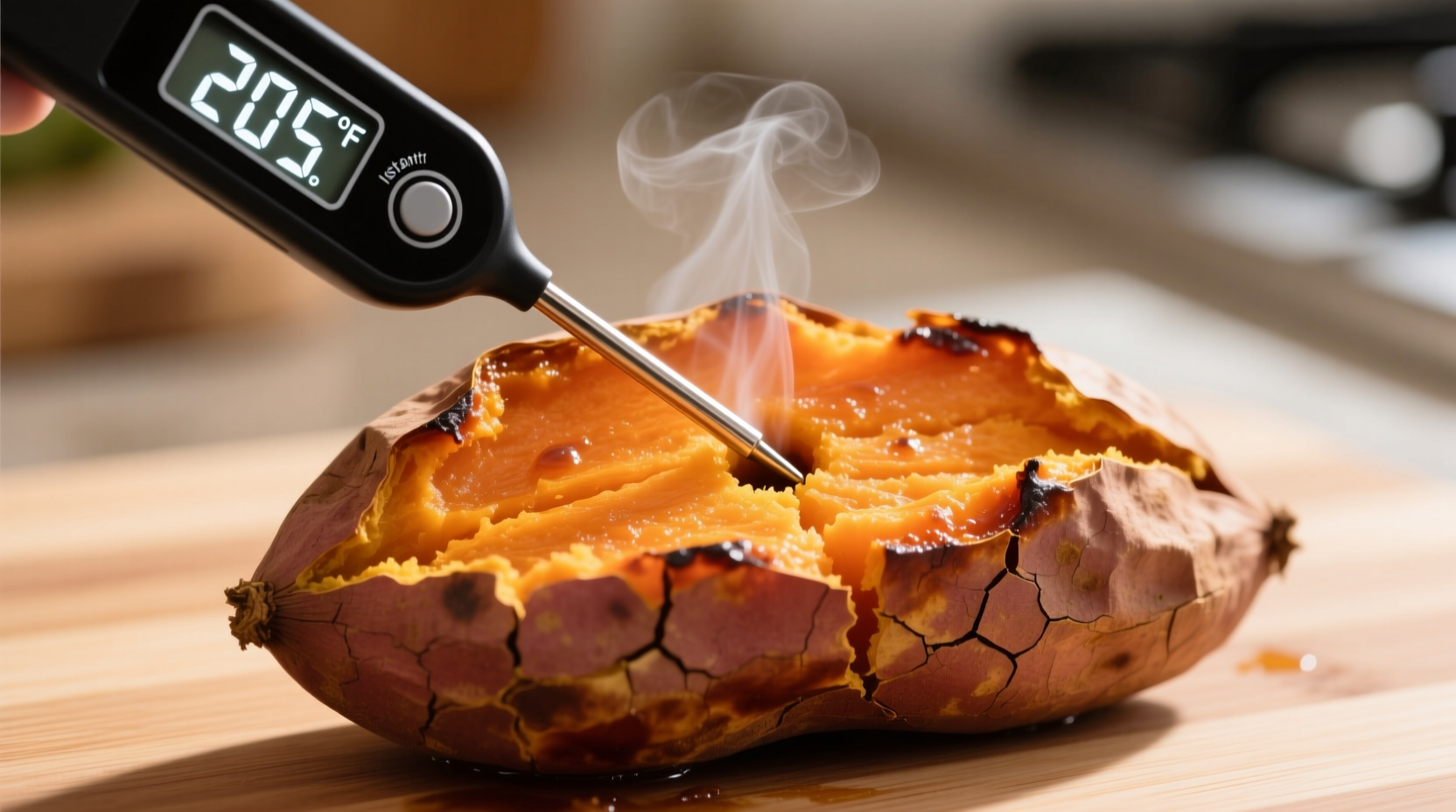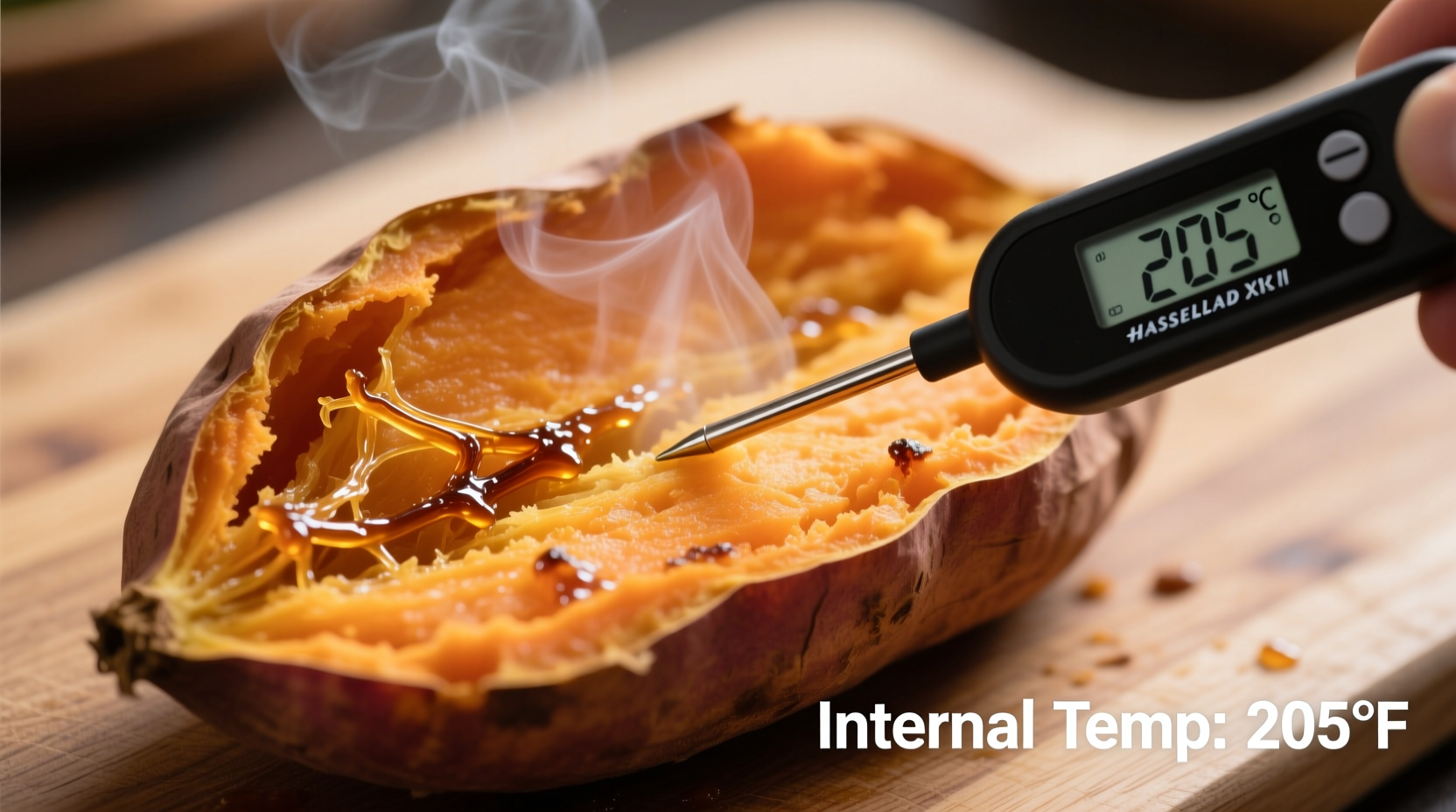The perfect internal temperature for fully cooked sweet potatoes is 205-212°F (96-100°C). This temperature range ensures complete starch gelatinization for optimal creamy texture without dryness. Baking typically requires 205-210°F, while boiled or steamed sweet potatoes reach ideal texture at 200-205°F.
Ever cut into a sweet potato only to find it's still hard in the center or unpleasantly mushy? You're not alone. Temperature, not time, is the most reliable indicator of perfectly cooked sweet potatoes. As a culinary professional who's tested hundreds of sweet potatoes across cooking methods, I can tell you that hitting that precise internal temperature transforms this humble root vegetable from disappointing to divine.
Why Temperature Matters More Than Time
Sweet potatoes vary dramatically in size, shape, and variety - from slender garnets to massive Japanese types. Cooking time alone can't account for these differences. The magic happens at the molecular level when starches gelatinize. According to research from the National Center for Home Food Preservation, sweet potato starches begin gelatinizing around 185°F (85°C) but require temperatures above 200°F (93°C) for complete transformation into that signature creamy texture.
| Internal Temperature | Texture Result | Starch Transformation |
|---|---|---|
| 185-195°F (85-90°C) | Firm center, slightly chalky | Partial gelatinization |
| 195-205°F (90-96°C) | Creamy throughout | Complete gelatinization |
| 205-212°F (96-100°C) | Optimal creamy texture | Maximum moisture retention |
| 212°F+ (100°C+) | Dry, fibrous texture | Excessive moisture loss |
Perfect Temperature by Cooking Method
While the target internal temperature remains consistent, different cooking methods require slight adjustments in technique. The USDA Food Safety and Inspection Service confirms that sweet potatoes are safe to eat at 145°F, but texture quality demands higher temperatures.
| Cooking Method | Target Internal Temp | Recommended Thermometer Placement |
|---|---|---|
| Oven Baking (whole) | 205-210°F (96-99°C) | Center of thickest part |
| Boiling/Steaming | 200-205°F (93-96°C) | Middle of largest piece |
| Roasting (cubed) | 195-200°F (90-93°C) | Center of largest cube |
| Air Frying | 200-205°F (93-96°C) | Through side of largest piece |
How to Measure Temperature Accurately
Proper temperature measurement makes all the difference. An instant-read thermometer is essential - the Thermapen ONE, recommended by America's Test Kitchen, provides readings in 2-3 seconds. Insert the probe into the center of the sweet potato, avoiding any metal pan contact. For whole potatoes, check multiple spots as heat distribution varies. Remember that temperature continues rising 5-10 degrees after removal from heat (carryover cooking), so pull sweet potatoes at 200°F when baking for perfect 205°F results.

Common Temperature Challenges and Solutions
Sweet potato cooking presents unique challenges that affect temperature readings. Different varieties have varying moisture and starch content - orange-fleshed types like Beauregard require slightly higher temperatures than white-fleshed varieties. At high altitudes, water boils at lower temperatures, extending cooking time. According to Colorado State University Extension, for every 1,000 feet above sea level, cooking time increases by approximately 5%.
When sweet potatoes don't reach proper temperature despite extended cooking, consider these factors:
- Size inconsistency: Mix of small and large potatoes in same batch
- Oven hot spots: Uneven heating affecting temperature distribution
- Thermometer placement: Measuring near skin rather than center
- Potato density: Some varieties naturally take longer to cook through
Advanced Temperature Techniques
Professional kitchens use temperature staging for perfect results. Try this technique: bake sweet potatoes until they reach 195°F, then let them rest for 10 minutes. The residual heat will carry them to the ideal 205°F range while allowing starches to fully set. For meal prep, cook sweet potatoes to exactly 205°F, then cool rapidly in an ice bath to preserve texture before refrigeration.
Understanding the starch transformation timeline helps perfect your technique:
- 185°F: Starch granules begin absorbing water and swelling
- 195°F: Granules rupture, releasing starch into surrounding water
- 205°F: Complete gelatinization creates smooth, creamy texture
- 212°F: Excessive moisture loss begins, leading to dryness
When following recipes that specify cooking times rather than temperatures, use this conversion as a starting point: a medium sweet potato (5-6 ounces) typically requires 45-55 minutes at 400°F to reach 205°F internally. But always verify with a thermometer - size variations can change this by 15-20 minutes.
Storing and Reheating for Temperature Perfection
Proper storage maintains that perfect temperature-derived texture. Refrigerate cooked sweet potatoes within 2 hours in airtight containers. When reheating, target 165°F for food safety while preserving texture. Microwave reheating often creates hot spots - heat at 50% power and check temperature in multiple spots. For oven reheating, wrap in foil and heat at 350°F until internal temperature reaches 165°F.











 浙公网安备
33010002000092号
浙公网安备
33010002000092号 浙B2-20120091-4
浙B2-20120091-4